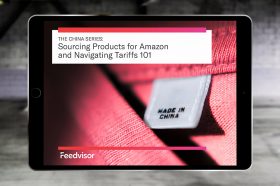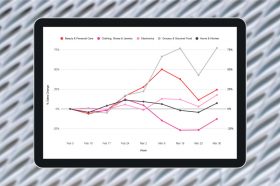Resources - Blog
4 Keys to Building Remote Relationships With Your Factory Partners

Stay on top of the latest e-commerce and marketplace trends.
It is the preference of any entrepreneur or small business owner who works in the e-commerce world to develop in-person relationships with their factory contacts. Usually, this is possible. In the unprecedented circumstances in which we find ourselves with the onset of COVID-19, however, it is worth considering how to solidify relationships remotely, as well.
The impetus will be on all of us going forward to think of relationship-building as a virtual activity rather than an in-person activity if the long-lasting effects of COVID-19 are as powerful as it appears they will be.
There are four key concepts to keep in mind here:
- Build consistent communication patterns that work in-person but also virtually.
- Leverage tools that remove barriers to productive collaboration.
- Ask how you can make your factory partner’s lives easier — and do so.
- Give away more value than you expect in return, within reason.
Below, we examine each of these concepts individually.
1. Build Consistent Communication Patterns
Building consistent communication patterns is the key to any healthy relationship, personal or business.
In-person communication has its advantages. It is much easier to interpret tone, feelings, attitudes, and context when speaking to someone in person than over email, via Slack, Zoom, or other common tools used to navigate daily work.
Email can be a ripe ground for miscommunication. If you can stay away from leaning on it as your primary communication platform, it is advisable. There are some situations in which email cannot be avoided, and that is fine. However, there are better methods to lean on with the technology that is available today.
It is not impossible to communicate well virtually. It takes work to set agreed-upon standards at the outset of your relationship. When working with a new factory, it is essential to determine how your point of contact likes to work and communicate and to mirror those preferences accordingly.
To make this easier, set a predictable and consistent weekly meeting cadence. With time zone differences, this can be challenging — especially if the factories with whom you are working are in China or Vietnam. Both parties should expect to bend a little here to find something that is equitable.
For these meetings, set an agenda for significant talking points or issues to address. Otherwise, leave the meeting open for free-flowing conversations. Trust builds when a less formal structure is the foundation. With more trust, collaboration and communication naturally improve.
2. Leverage Technology Tools for Productive Collaboration
There will be plenty of work to be done in between your weekly meetings. Ad hoc solutions would be fine if there were no solutions to make collaboration more manageable, but there are so many options.
Project management platforms like Trello, Asana, Wrike, and Smartsheet, and unified communication platforms like Zoom and Slack, make virtual collaboration a breeze at a reasonable price point for small businesses. The enterprise versions of these tools can get a little pricey, but they often have overwhelming feature sets that can border on overkill for what most people need.
These tools are a great way to work together to ensure projects stay on time, under budget, and within the original scope. Most of these softwares have options like to-do lists, Kanban boards, and even Gantt charts to match your preferred work styles. Kanban boards, in particular, are an excellent way for visual learners to see completed work and what is left to do.
Something less formal than a project management software could work, as well. Find an easy-to-use solution that fosters your collaboration and run with it.
When the time comes where you can meet in person again, you will have these solutions established as a springboard for productive conversations.
3. Ask How to Make Your Factory Partners’ Lives Easier
Even in the best of times, factories face a myriad of governmental regulations, compliance and safety requirements, and adherence to protocols that would make most peoples’ heads spin. With the onset of COVID-19, things have become even more complicated.
For example, cut-and-sew factories accustomed to making clothing have shifted focus to manufacturing masks and other personal protective equipment they had never previously produced. As companies figure out how to efficiently shift their daily operations, margin protection and workflows are being challenged.
One of the best ways to build a remote-based relationship with your partners is to offer up a bit of expertise or a workaround that can make their day to day a little less complicated.
Are there contacts you can offer up that might help streamline their processes? Are there tools or methods you can suggest to ease some of the language barriers or communication barriers they might experience?
Your partners will appreciate anything that can make their lives more comfortable — and their daily work more efficient — and will be likely to return the favor later on when you need it.
4. Give Away More Value Than You Expect in Return, Within Reason
Consistently giving away more value than you expect in return from your factory partners is a great way to solidify the trust in your business relationship. This exchange is particularly true when you are unable to frequently meet in person.
This value offer is within reason. You do not want to give away information that could be damaging to your business or cause an imbalance of knowledge in the relationship.
Knowledge of best practices built on experience in the trenches of product creation is valuable for your factory partner. They undoubtedly have similar specialized knowledge to provide in due time.
That said, quid pro quo simply does not work very well when resources are stretched thin, and everyone is doing their best to work with what they know and the resources that are available to them. There should not be any roadblocks in your relationship because one party is waiting for the other to “make things even.”
Give freely and selflessly. In doing so, you will receive value equal to or greater than what you give back in return.
Final Thoughts
Building relationships with your factory partners from a distance creates some unique challenges. Being creative to find solutions and communication patterns that make collaboration easier is the key.
With the technology tools we have available to leverage, this collaboration is easier than it has ever been. Be selfless, offer value, and watch your relationships with factories grow more robust and more profitable for everyone involved.
Kris Hughes is the Senior Content Creator for Austin, Texas-based product innovation platform, Gembah. Gembah helps entrepreneurs and small businesses confidently navigate the product development life cycle from research, to design, to manufacturing, to go-to-market strategy.
Learn what Feedvisor can do for your business.
When you partner with Feedvisor, you automatically receive access to our true, AI-driven technology and hands-on team of e-commerce experts. Contact one of our team members today to learn more about our end-to-end solution for brands and large sellers on Amazon, Walmart, and e-marketplaces.




